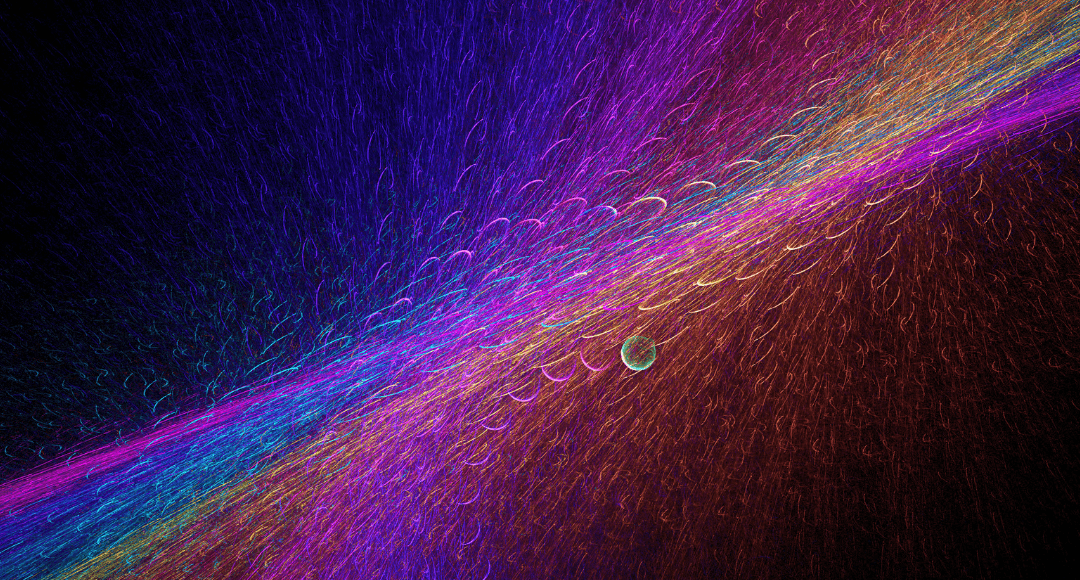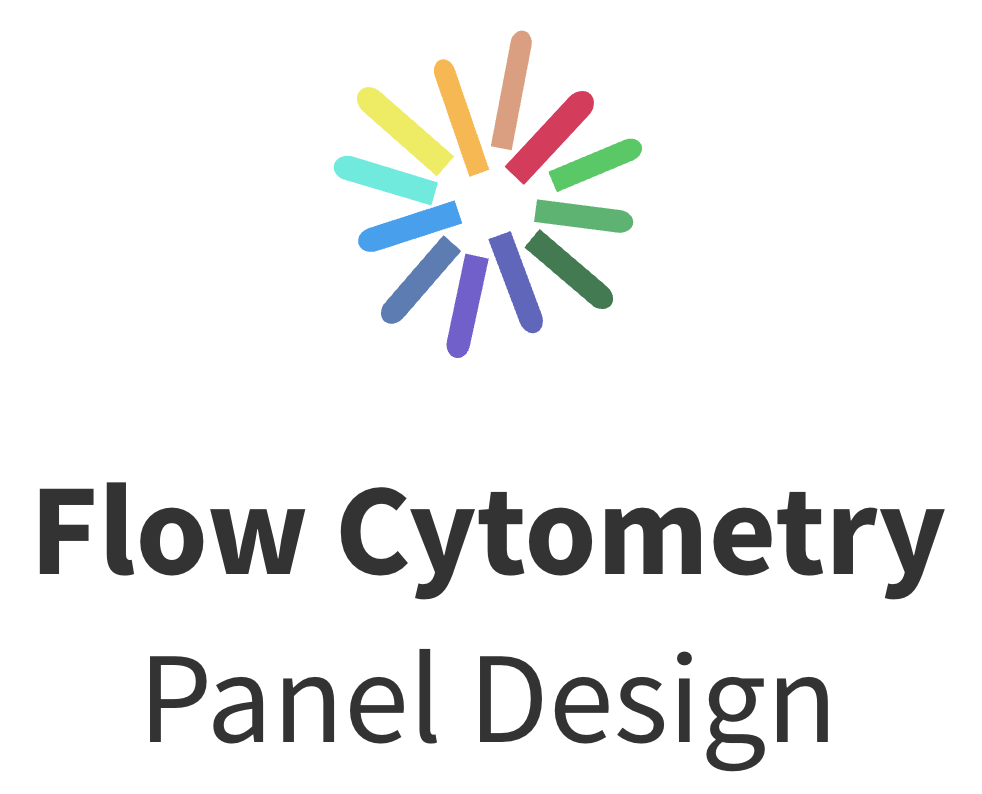Spectral flow cytometry improves on traditional flow cytometry by capturing the entire emission spectrum of each fluorochrome, rather than isolating specific wavelengths. This enables more precise resolution of overlapping fluorochromes and greater flexibility in panel design to better meet the analytical challenges presented by modern scientific research. With demand for high-dimensional single-cell analysis growing, spectral instrumentation is evolving fast. We spoke with some leading manufacturers to learn about the latest developments within the field.
BD FACSDiscover™ A8 Cell Analyzer
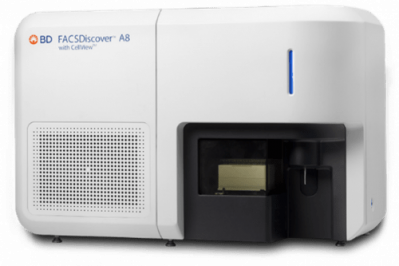 The BD FACSDiscover™ A8 Cell Analyzer, unveiled at CYTO 2025, is BD Biosciences’ latest innovation in spectral flow cytometry. Designed as the analytical companion to the BD FACSDiscover™ S8 Cell Sorter, it combines high-parameter spectral flow with real-time imaging through a combination of 5 lasers (349, 405, 488, 561, 637 nm) and 86 detectors: 78 avalanche photodiodes for spectral fluorescence across all lasers, 6 imaging detectors from the blue laser (FSC, LightLoss, SSC, and 3 fluorescence channels), and 2 violet scatter detectors (LightLoss and SSC). A next-generation Setup & QC system ensures optimal detector calibration and performance using LED-based tools and setup beads, enabling consistent results across instruments and sites.
The BD FACSDiscover™ A8 Cell Analyzer, unveiled at CYTO 2025, is BD Biosciences’ latest innovation in spectral flow cytometry. Designed as the analytical companion to the BD FACSDiscover™ S8 Cell Sorter, it combines high-parameter spectral flow with real-time imaging through a combination of 5 lasers (349, 405, 488, 561, 637 nm) and 86 detectors: 78 avalanche photodiodes for spectral fluorescence across all lasers, 6 imaging detectors from the blue laser (FSC, LightLoss, SSC, and 3 fluorescence channels), and 2 violet scatter detectors (LightLoss and SSC). A next-generation Setup & QC system ensures optimal detector calibration and performance using LED-based tools and setup beads, enabling consistent results across instruments and sites.
The A8 is powered by two proprietary technologies. At the core of its imaging capabilities is BD CellView™ Image Technology, a camera-free system using Orthogonal Frequency Domain Multiplexing (OFDM) to generate high-resolution images at high speed. This enables visualization of fluorescence localization and cellular morphology alongside spectral data – ideal for studying protein trafficking, receptor expression, organelle activity, cell-cell interactions, and rare populations. The A8 also features BD SpectralFX™ Technology, which uses AI-optimized optics and an exclusive system-aware unmixing algorithm to interpret full-spectrum fluorescence. By dynamically adjusting detector noise and signal brightness for every cell, BD SpectralFX Technology minimizes spillover-spreading and accurately manages autofluorescence, even in panels exceeding 50 colors.
Other key features of the A8 include its capacity to switch between two different fluidic modes depending on researchers’ needs – high-speed mode captures up to 35,000 events/second for traditional spectral analysis, while imaging mode (up to 12,500 events/sec) adds real-time image generation, with up to 78 image-derived parameters per cell. In addition, a temperature-controlled autoloader with sample mixing and clog/bubble detection supports walkaway operation with 12×75 mm tubes and 96-well plates, while BD FACSChorus™ Software provides a guided workflow to simplify learning and operation.
CytoFLEX Mosaic Spectral Detection Module

Beckman Coulter Life Sciences has pioneered the industry’s first modular spectral solution: the CytoFLEX mosaic Spectral Detection Module for research use only. Designed to integrate seamlessly with certain CytoFLEX Flow Cytometer models, this module delivers exceptional fluorescence sensitivity – ideal for detecting dim signals and managing complex multicolor experiments. It can even detect nanoparticles as small as 80 nm (polystyrene, when triggering on violet side scatter).
The CytoFLEX mosaic module empowers users with:
- Dual-mode capability: Easily switch between conventional and spectral modes to support a wide range of experimental workflows – from basic to highly advanced.
- Scalable design: Adopt a “grow-as-you-need” approach, expanding capabilities without disrupting existing workflows.
- High-resolution detection: Up to 88 detection channels, 10 autofluorescence channels, and two unmixing algorithms for superior spectral separation and accuracy.
The enhanced CytExpert for Spectral software builds on the intuitive interface users already know and trust – minimizing training time and accelerating adoption of spectral technology. With a single click, users can access the Cytobank platform for advanced, machine learning-powered analysis of complex spectral data.
Powered by a proprietary algorithm, the CytoFLEX mosaic module improves resolution and ensures unmixing accuracy. Built-in quality checks and robust control features help deliver the most reliable results from spectral experiments.
Invitrogen™ Attune™ Xenith™ Flow Cytometer
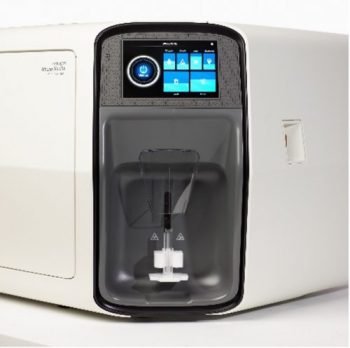 For flow cytometrists juggling complex samples, rare populations, and high-parameter panels, the newly launched Invitrogen™ Attune™ Xenith™ Flow Cytometer from Thermo Fisher Scientific delivers a major upgrade in performance and efficiency. Integrating high-throughput acquisition with a robust architecture optimized for complex and clog-prone samples, the system leverages acoustic-assisted hydrodynamic focusing to maintain precise core stream alignment at flow rates up to 1,000 µL/min, supporting accurate resolution, even at high event rates. This enables efficient detection of rare populations and high-parameter panel analysis without compromising data quality.
For flow cytometrists juggling complex samples, rare populations, and high-parameter panels, the newly launched Invitrogen™ Attune™ Xenith™ Flow Cytometer from Thermo Fisher Scientific delivers a major upgrade in performance and efficiency. Integrating high-throughput acquisition with a robust architecture optimized for complex and clog-prone samples, the system leverages acoustic-assisted hydrodynamic focusing to maintain precise core stream alignment at flow rates up to 1,000 µL/min, supporting accurate resolution, even at high event rates. This enables efficient detection of rare populations and high-parameter panel analysis without compromising data quality.
The Invitrogen Attune Xenith Flow Cytometer features six lasers (349–781 nm) and 51 fluorescent detectors, with support for both spectral unmixing and conventional compensation. Its flexible optical design facilitates advanced panel development, while built-in capabilities – such as real-time pressure monitoring, automated clog recovery, and onboard remote diagnostics – minimize disruption during demanding workflows involving tissues, tumors, or primary cells.
In side-by-side comparisons, the Attune Xenith maintained population resolution at both low and high flow rates – helping to boost sample throughput without data degradation (Figure 1). For labs handling concentrated or challenging samples, this means less dilution, faster processing, and more actionable results.
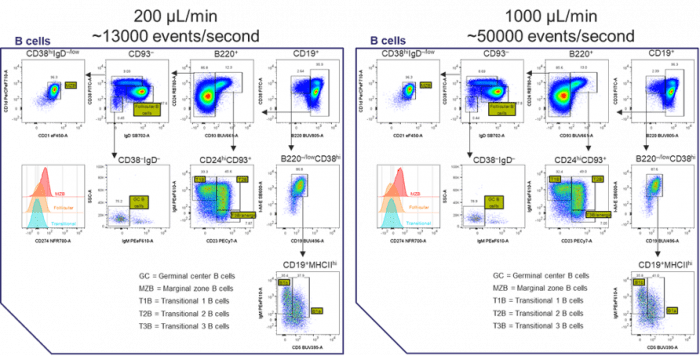
Figure 1. Flow cytometric analysis of mouse spleen demonstrates consistent population resolution across flow rates. A 37-parameter panel was used to analyze single-cell suspensions prepared from mechanically dissociated and filtered (70 µm) mouse spleen tissue. Data acquisition at 200 and 1,000 µL/min shows preserved population resolution and clog-free operation on the Attune Xenith Flow Cytometer, enabling rapid analysis of CD19+ B cells and their subsets. Population resolution remained stable even at high event rates from concentrated samples, although sample dilution is recommended to minimize cellular aggregates while maximizing throughput.
Invitrogen™ Bigfoot™ Spectral Cell Sorter
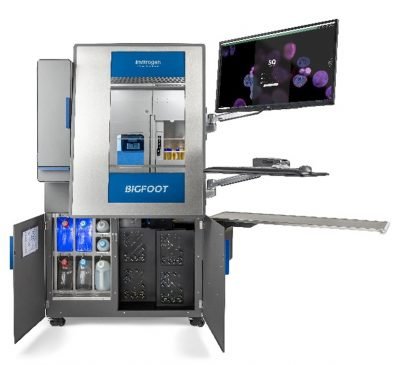 Sorting very large cells (50 – 100 µm) with standard nozzle tip sizes on cell sorting flow cytometers can be challenging due to the low frequency and fragile nature of many large cell types. The required pressures for 70, 100, and even 120 µm nozzle tips may compromise large or delicate cells owing to the shearing forces associated with smaller orifices. To better accommodate large cell sorting requirements, the Invitrogen™ Bigfoot™ Spectral Cell Sorter has recently been augmented with a 200 µm nozzle tip, which complements the existing 70, 100, 120, and 150 µm options. Now very large cells from complex samples can be sorted for further downstream analyses. To demonstrate the utility of the 200 µm nozzle tip, Thermo Fisher Scientific has performed sorting of HEK293-derived spheroids – find out more in this poster, which was recently presented at CYTO 2025.
Sorting very large cells (50 – 100 µm) with standard nozzle tip sizes on cell sorting flow cytometers can be challenging due to the low frequency and fragile nature of many large cell types. The required pressures for 70, 100, and even 120 µm nozzle tips may compromise large or delicate cells owing to the shearing forces associated with smaller orifices. To better accommodate large cell sorting requirements, the Invitrogen™ Bigfoot™ Spectral Cell Sorter has recently been augmented with a 200 µm nozzle tip, which complements the existing 70, 100, 120, and 150 µm options. Now very large cells from complex samples can be sorted for further downstream analyses. To demonstrate the utility of the 200 µm nozzle tip, Thermo Fisher Scientific has performed sorting of HEK293-derived spheroids – find out more in this poster, which was recently presented at CYTO 2025.
Cytek Aurora™ Evo Flow Cytometer
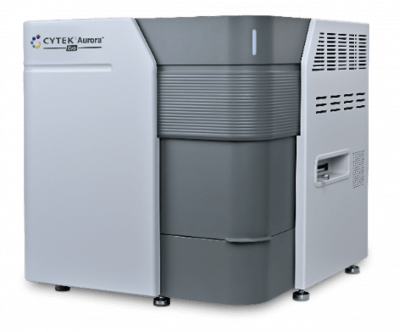 Launched in May and publicly debuted at CYTO 2025, the Cytek Aurora™ Evo flow cytometer carries forward the proven reliability and reproducibility of the Cytek Aurora™ system, while enhancing high-throughput and automation capabilities. Specifically, the Cytek Aurora Evo system supports sample flow rates of up to 200 μL/min using both tubes and plates without compromising resolution, and features automated startup, shutdown, and maintenance to improve workflow efficiencies. Moreover, with standardized instrument setup and harmonization, the system helps to ensure reproducible biological data across instruments and across time.
Launched in May and publicly debuted at CYTO 2025, the Cytek Aurora™ Evo flow cytometer carries forward the proven reliability and reproducibility of the Cytek Aurora™ system, while enhancing high-throughput and automation capabilities. Specifically, the Cytek Aurora Evo system supports sample flow rates of up to 200 μL/min using both tubes and plates without compromising resolution, and features automated startup, shutdown, and maintenance to improve workflow efficiencies. Moreover, with standardized instrument setup and harmonization, the system helps to ensure reproducible biological data across instruments and across time.
Like Cytek® Biosciences’ flagship Cytek Aurora instrument, the Cytek Aurora Evo is built on Full Spectrum Profiling™ technology, which enhances cell analysis by providing high-resolution, high-content, and high-sensitivity results. However, while small particle detection is available as an optional upgrade on the Cytek Aurora system, this capability is built into the Cytek Aurora Evo flow cytometer, enabling researchers to detect and resolve extracellular vesicles, viruses, bacteria, and other nanoparticles as needed.
Bring Mass Spectrometry into the Fluorescence Workflow
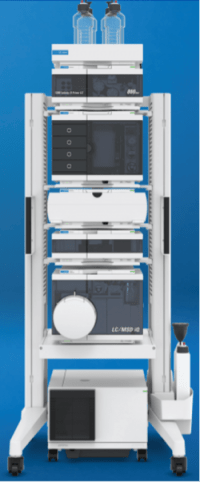 As flow cytometry experiments become more complex, researchers increasingly require complementary methods to validate their results. Therefore mass spectrometry is beginning to play a larger role, particularly in confirming the identity and purity of fluorescent probes, small molecules, and antibody-drug conjugates.
As flow cytometry experiments become more complex, researchers increasingly require complementary methods to validate their results. Therefore mass spectrometry is beginning to play a larger role, particularly in confirming the identity and purity of fluorescent probes, small molecules, and antibody-drug conjugates.
Until recently, high-accuracy mass spectrometry was mostly limited to labs with access to high-resolution instruments. These systems, while powerful, are expensive and often require specialized training. But a recent collaboration between Cerno Bioscience and Agilent Technologies is changing that. In June, the two companies announced that Cerno’s MassWorks® software is now integrated with Agilent’s InfinityLab LC/MSD iQ+ system – a single quadrupole mass spectrometer that is far more accessible to everyday research labs.
This integration offers many advantages. MassWorks enables up to 0.005 Da mass accuracy and 99.9% spectral fidelity, making it possible to identify unknown compounds with confidence, even in complex biological samples. And the LC/MSD iQ+ system is designed with usability in mind, featuring automated optimization, fast polarity switching, and seamless integration with Agilent’s OpenLab software, so that scientists can now get up and running more quickly. Consequently, the MassWorks and LC/MSD iQ+ system combination offers a great solution for researchers who are looking to add mass spec to their fluorescence-based workflows.
Supporting Your Research
FluoroFinder has developed a suite of tools to streamline your research. Use our Antibody Search function to find antibodies that are validated for flow cytometry, then leverage the Spectral version of our Spectra Viewer to select the best dyes for your spectral instrument. And, if you need a close look at the spectral profiles of different dyes, our Fluorescent Dye Database contains information on more than a thousand different fluorochromes.
